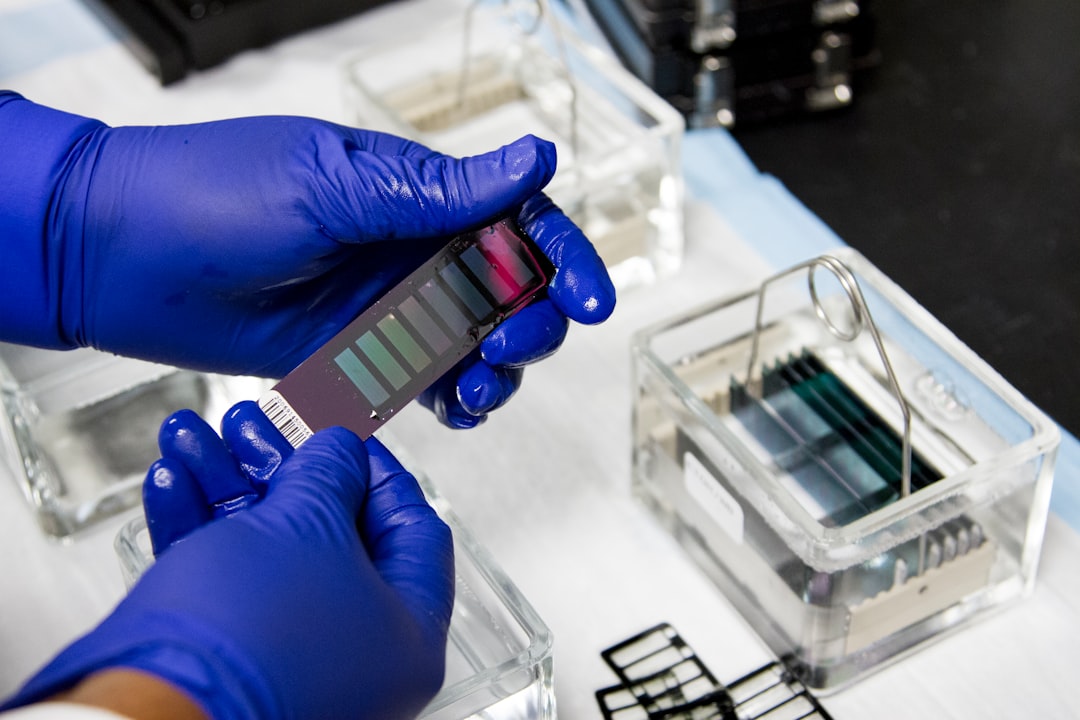Unlock encrypted content
Please enter your SSCE key to initiate on-the-fly decryption.
Decryption key: (Click cancel if you don't have the key)
Copied link to clipboard.
This feature is unavailable for free accounts. Upgrade now and enjoy all Premium benefits.
Go Premium!
This feature is unavailable for free accounts. Upgrade now and enjoy all Premium benefits.
Go Premium!
Please open this page in browser ( Google Chrome or Safari ) to use this feature.
Open In Browser
The Future of Technology in 2030: Cyborgs, Androids, and the Evolution of Work.
Random related video for this blog.
Copied share link to clipboard.
In the rapidly evolving world of technology, the year 2030 promises to bring forth a slew of groundbreaking advancements that will redefine the way we live, work, and interact with the world around us. From the rise of cyborgs and androids to the development of cutting-edge biotechnology, the future is brimming with possibilities. In this article, we will explore some of the key trends and innovations that are set to shape the technology landscape in 2030.
The Rise of Cyborgs and Androids
One of the most intriguing developments on the horizon is the rise of cyborgs and androids. A cyborg, short for cybernetic organism, refers to a being that combines both biological and artificial components. With advancements in robotics, artificial intelligence, and nanotechnology, cyborgs are expected to become a common sight in 2030. Imagine a future where individuals have the ability to enhance their physical and cognitive abilities through the integration of technology with their bodies. From bionic limbs that provide superhuman strength and agility to neural implants that enhance memory and cognitive functions, the possibilities are endless. Cyborgs could blur the line between humans and machines, opening up new avenues for exploration and pushing the boundaries of what it means to be human. Androids, on the other hand, are humanoid robots that are designed to closely resemble humans in appearance and behavior. In 2030, we can expect to see androids taking on a range of roles, from customer service representatives and caregivers to companions and even artists. With advancements in natural language processing, facial recognition, and emotional intelligence, androids will be able to interact with humans in a more intuitive and lifelike manner.File Preview and Thumbnail Generation
In the era of information overload, finding and organizing files can be a daunting task. However, in 2030, we can expectfile preview and thumbnail generation technologies to revolutionize the way we manage and access our digital content. These technologies use artificial intelligence and machine learning algorithms to analyze the contents of files and generate visual representations or summaries. For example, imagine being able to see a preview of a document or image without having to open it. This would save valuable time and make it easier to locate the specific file you're looking for. Similarly, thumbnail generation can create small visual representations of files, allowing for quick and easy browsing through large collections of photos or videos. FileLu, a cloud storage provider, is at the forefront of this technology, offering advanced file preview and thumbnail generation capabilities. With their platform, users can quickly scan through their files and visually identify the content they need, streamlining productivity and enhancing user experience.
The Future of Work
The future of work is set to undergo a radical transformation in 2030. Advancements in automation, artificial intelligence, and robotics will reshape the job market and redefine the roles and skills required in various industries. While some fear that automation will lead to widespread job loss, others argue that it will create new opportunities and enable humans to focus on more complex and creative tasks. One of the key trends in the future of work is the integration of humans and machines. As technology continues to evolve, humans will increasingly collaborate with robots and AI systems, leveraging their unique strengths to enhance productivity and efficiency. This symbiotic relationship between humans and machines will require individuals to develop new skills, such as problem-solving, critical thinking, and adaptability. Additionally, the rise of edge computing will play a crucial role in the future of work. Edge computing refers to the decentralized processing of data at the edge of the network, closer to the source of data generation. This approach reduces latency and enables real-time data processing, making it ideal for applications that require instant responses, such as autonomous drones and self-driving cars.Advanced Encryption Algorithms and Efficient File Sharing
As technology continues to advance, so do the threats to our digital security. In 2030, advanced encryption algorithms will be crucial in safeguarding our sensitive data from cyberattacks. These algorithms use complex mathematical formulas to convert data into an unreadable format, ensuring that only authorized individuals can access and decrypt the information. Efficient file sharing will also be a key focus in 2030, as the need for seamless collaboration and data exchange becomes increasingly important. With the rise of remote work and global teams, organizations require secure and efficient methods to share large files and collaborate on projects. FileLu, for instance, offers a secure and user-friendly platform for file sharing, allowing users to transfer files of up to 250 GB in size. By incorporating advanced encryption algorithms, FileLu ensures that files are protected during transit and storage, providing peace of mind to users.Conclusion
The future of technology in 2030 holds immense promise and potential. From the rise of cyborgs and androids to advancements in biotechnology, the possibilities are endless. As we embrace these transformative technologies, it is crucial to consider the ethical implications and ensure that they are harnessed for the benefit of humanity. As we move towards this future, it is important to stay informed and adapt to the changing landscape. By leveraging the latest advancements and embracing new opportunities, we can shape a future that is not only technologically advanced but also sustainable and inclusive.Frequently Asked Questions (FAQs)
Question: How can I transfer large files securely in 2030? Answer:
In 2030, you can use platforms like FileLu to transfer large files securely. FileLu offers advanced encryption algorithms and allows users to transfer files up to 250 GB in size. With their secure and user-friendly platform, you can ensure that your files are protected during transit and storage.
Question: What is the role of edge computing in the future of work? Answer:
Edge computing plays a crucial role in the future of work by enabling real-time data processing and reducing latency. This is particularly important for applications that require instant responses, such as autonomous drones and self-driving cars. By processing data at the edge of the network, closer to the source of data generation, edge computing enhances efficiency and enables seamless automation.
Question: How can cyborgs and androids enhance our lives in 2030? Answer:
In 2030, cyborgs and androids have the potential to enhance our lives in various ways. Cyborgs can integrate technology with their bodies, allowing for enhanced physical and cognitive abilities. This could lead to advancements in healthcare, prosthetics, and human performance. Androids, on the other hand, can take on roles that require human-like interaction, such as customer service representatives and caregivers. They can provide companionship and assistance, particularly in situations where human resources are limited.
Case Studies: 1. Company X increases productivity by implementing advanced file preview and thumbnail generation technologies, reducing time spent searching for files and improving workflow efficiency. 2. Organization Y adopts edge computing for their autonomous drone fleet, enabling real-time data processing and enhancing the delivery of goods and services. 3. Research institution Z utilizes advanced encryption algorithms and efficient file sharing platforms to securely collaborate and share large datasets, ensuring data integrity and confidentiality.
By Amelia Isabella
Email: [email protected]
Related
Brain-Machine Interfaces: Revolutionizing Vehicle Safety Systems and Data Sharing
July 8, 2024
Read More
FileLu Simple Cloud Storage: Introducing Family Share Storage and Storage...
July 24, 2024
Read More
Human-Machine Interface and Cloud Storage 2024: The Future of Cybersecurity...
August 18, 2024
Read More
Bulk Uploading Feature: Revolutionizing File Management and Collaboration
September 4, 2024
Read More
Popular
Latest
The Future of Digital Transformation: Exploring Smart Homes, Efficient File...
November 30, 2025
Read More
Exploring the Benefits of Cloud Storage and Innovative Technologies in...
November 26, 2025
Read More
The Future of Technology: Exploring Biohacking, Space Tourism, and Digital...
November 23, 2025
Read More
The Future of File Sharing: Streamlined Workflows for Photographers and...
November 19, 2025
Read More
Exploring the Intersection of Technology: From Cybersecurity to Augmented Reality...
November 16, 2025
Read More
The Future of File Management: Embracing Edge Computing and Efficient...
November 12, 2025
Read More
The Future of File Sharing: Exploring User-Friendly Solutions and Data...
November 5, 2025
Read More
The Future of Cloud Storage: How FileLu Empowers Creative Professionals...
November 2, 2025
Read More
The Future of Autonomous Technologies: Innovations in Robotics, File Sharing,...
October 29, 2025
Read More
Emerging Technologies Revolutionizing File Management: From Li-Fi to Robust Collaboration...
October 26, 2025
Read More
Emerging Technologies: Exploring the Impact of File Access Auditing, Genetic...
October 19, 2025
Read More
The Future of Data Storage: Exploring Advanced Encryption, Mobile Integration,...
October 5, 2025
Read More
Exploring the Future of Data Management: Security, Efficiency, and Cognitive...
September 28, 2025
Read More
Revolutionizing Data Management: Innovations in Storage, Security, and Sustainable Technology.
September 24, 2025
Read More






















